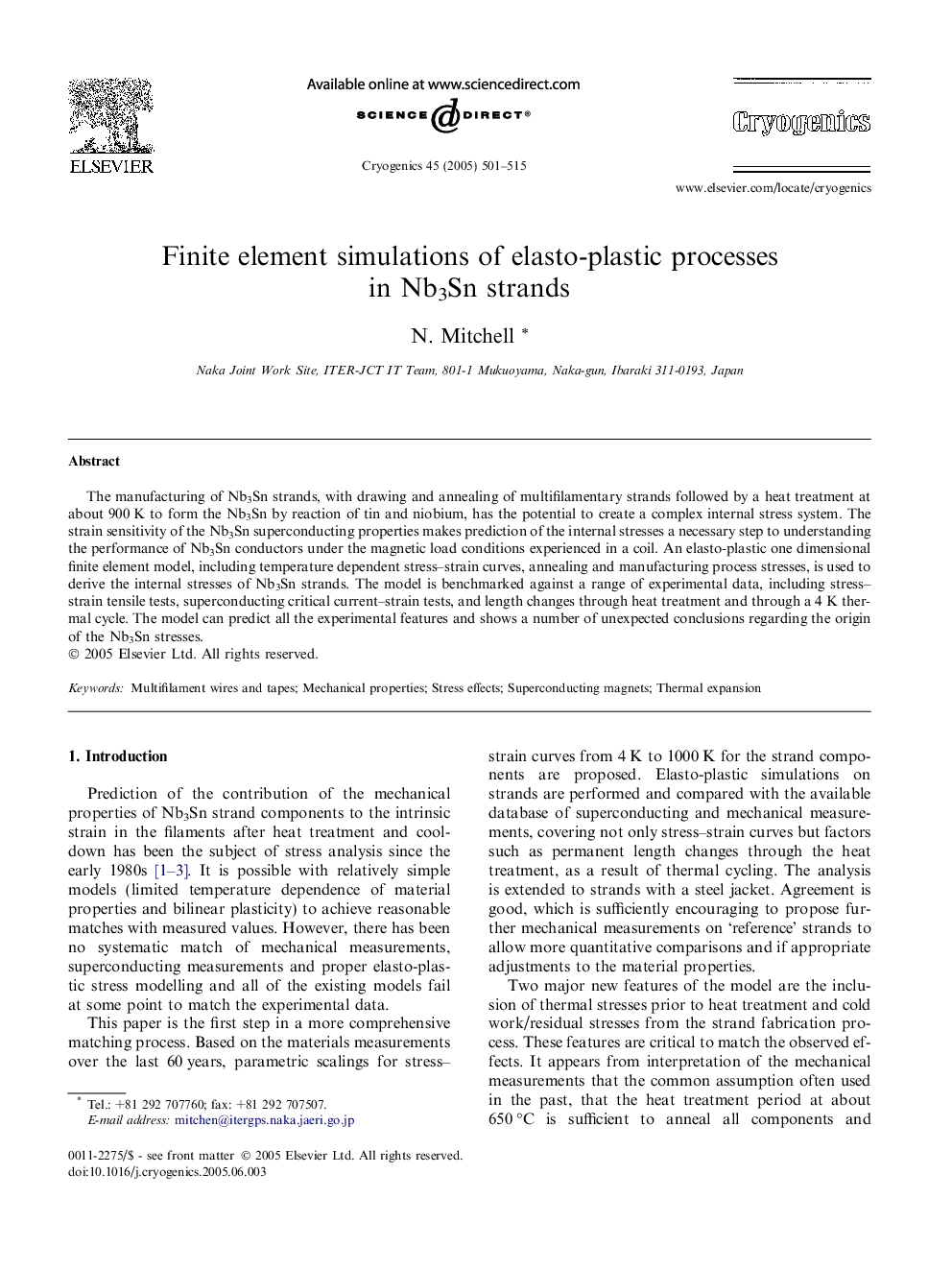| Article ID | Journal | Published Year | Pages | File Type |
|---|---|---|---|---|
| 10637678 | Cryogenics | 2005 | 15 Pages |
Abstract
The manufacturing of Nb3Sn strands, with drawing and annealing of multifilamentary strands followed by a heat treatment at about 900Â K to form the Nb3Sn by reaction of tin and niobium, has the potential to create a complex internal stress system. The strain sensitivity of the Nb3Sn superconducting properties makes prediction of the internal stresses a necessary step to understanding the performance of Nb3Sn conductors under the magnetic load conditions experienced in a coil. An elasto-plastic one dimensional finite element model, including temperature dependent stress-strain curves, annealing and manufacturing process stresses, is used to derive the internal stresses of Nb3Sn strands. The model is benchmarked against a range of experimental data, including stress-strain tensile tests, superconducting critical current-strain tests, and length changes through heat treatment and through a 4Â K thermal cycle. The model can predict all the experimental features and shows a number of unexpected conclusions regarding the origin of the Nb3Sn stresses.
Related Topics
Physical Sciences and Engineering
Materials Science
Electronic, Optical and Magnetic Materials
Authors
N. Mitchell,
